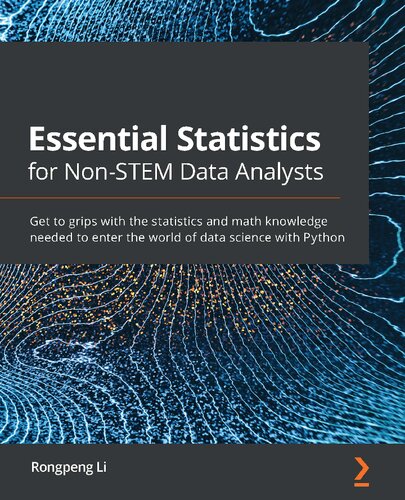

Most ebook files are in PDF format, so you can easily read them using various software such as Foxit Reader or directly on the Google Chrome browser.
Some ebook files are released by publishers in other formats such as .awz, .mobi, .epub, .fb2, etc. You may need to install specific software to read these formats on mobile/PC, such as Calibre.
Please read the tutorial at this link: https://ebookbell.com/faq
We offer FREE conversion to the popular formats you request; however, this may take some time. Therefore, right after payment, please email us, and we will try to provide the service as quickly as possible.
For some exceptional file formats or broken links (if any), please refrain from opening any disputes. Instead, email us first, and we will try to assist within a maximum of 6 hours.
EbookBell Team

4.0
26 reviewsReinforce your understanding of data science and data analysis from a statistical perspective to extract meaningful insights from your data using Python programming
Key FeaturesStatistics remain the backbone of modern analysis tasks, helping you to interpret the results produced by data science pipelines. This book is a detailed guide covering the math and various statistical methods required for undertaking data science tasks.
The book starts by showing you how to preprocess data and inspect distributions and correlations from a statistical perspective. You'll then get to grips with the fundamentals of statistical analysis and apply its concepts to real-world datasets. As you advance, you'll find out how statistical concepts emerge from different stages of data science pipelines, understand the summary of datasets in the language of statistics, and use it to build a solid foundation for robust data products such as explanatory models and predictive models. Once you've uncovered the working mechanism of data science algorithms, you'll cover essential concepts for efficient data collection, cleaning, mining, visualization, and analysis. Finally, you'll implement statistical methods in key machine learning tasks such as classification, regression, tree-based methods, and ensemble learning.
By the end of this Essential Statistics for Non-STEM Data Analysts book, you'll have learned how to build and present a self-contained, statistics-backed data product to meet your business goals.
What you will learnThis book is an entry-level guide for data science enthusiasts, data analysts, and anyone starting out in the field of data science and looking to learn the essential statistical concepts with the help of simple explanations and examples. If you're a developer or student with a non-mathematical background, you'll find this book useful. Working knowledge of the Python programming language is required.
Table of Contents